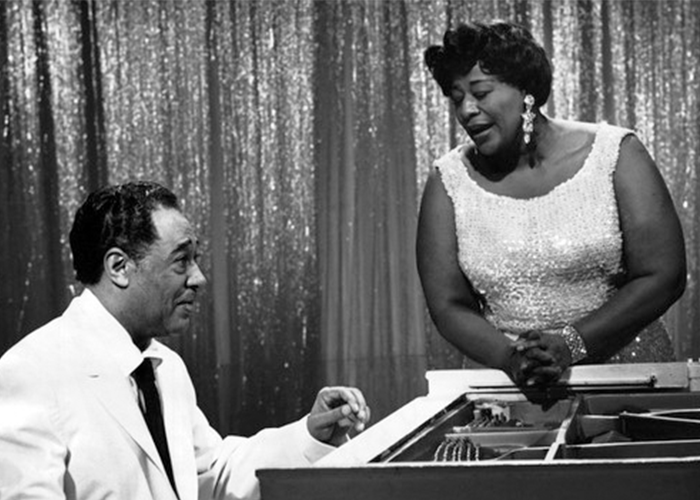Band leader Conrad Butler and Ike Quebec, front right, with the Barons of Rhythm at the Shady Rest Country Club, circa 1940. Quebec is joined on the front line by Jimmy Stanford, Bobby Jarrett, and T.O. Swaingin
Contributor: Swing City: Newark Nightlife, 1925-50 By Barbara J. Kukla
Financial Troubles
Despite the glitz and glam of Shady Rest Country Club, the club struggled financially. The club defaulted on their taxes, which resulted in Scotch Plains Township acquiring the Shady Rest property through a tax lien foreclosure in 1938.
The Shady Rest maintained its club until 1964, under uneasy financial circumstances. William Willis Sr. changed the club’s strategy to attract the best entertainers to increase event attendance and membership within the club.
Jazz ensemble poised on stage at Shady Rest, the rhythm of a bygone era captured in a timeless photograph.
“The Mecca of Entertainment on the East Coast”
As noted in Barbara J. Kukla's seminal work, "Swing City: Newark Nightlife, 1925-1950," Shady Rest was celebrated as the place "where all the rich black folks used to go."
The Shady Rest became a regular stop for black jazz musicians as they played concert venues in New York City. Jazz musicians Ella Fitzgerald, Duke Ellington, and Billie Holiday filled the Shady Rest with beautiful sound. Many musicians played the Shady Rest, including Chick Webb, Jimmie Lunceford, Lionel Hampton, Sarah Vaughan, Cab Calloway, Earl Hines, Count Basie, and Louis Armstrong.
Ella Fitzgerald at Paul Masson Winery, Saratoga CA 6/5/86
© Brian McMillen
Ella’s Silver Dollar
On July 11, 1937, Ella Fitzgerald played Shady Rest Country Club with the Chick Webb Band. When Ella Fitzgerald stepped off the bus upon her arrival at the Shady Rest, a young girl named Deborah Nettingham sprinted up to the bus to see Ella Fitzgerald when the bus door opened. Ella Fitzgerald placed a silver dollar in the palm of her hand.

